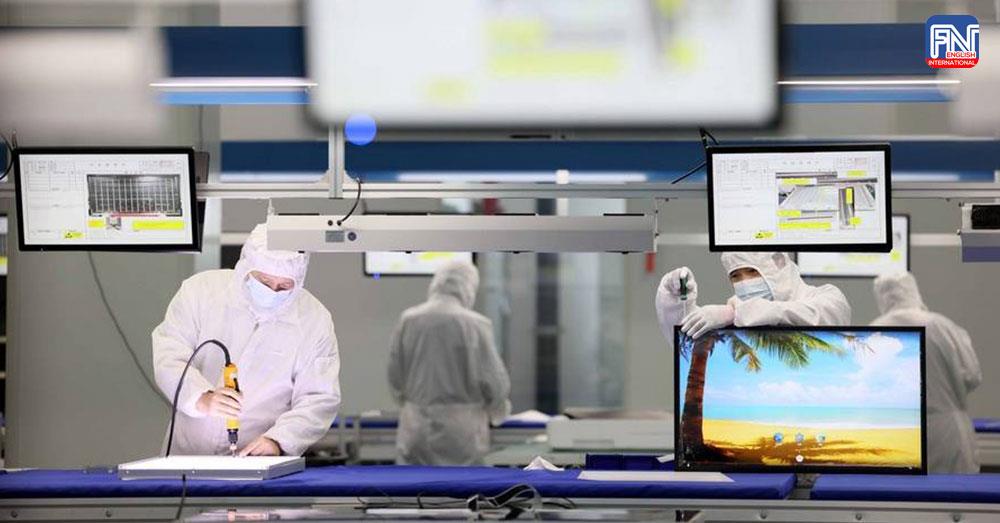BEIJING, Mar. 16 (CGTN) – China's economic rise to a major global power over the last four and a half decades has been for a long time a major topic of discussion in high-level government meetings and corporate boardrooms around the world.
The outcome of this extraordinary growth story is there for all to see. China is now the world's second-largest economy, the largest manufacturer and exporter, the second-largest importer, and the largest holder of foreign exchange reserves.
The rapid emergence of the country on the global stage has resulted in the creation of a vast market with unlimited development opportunities, which provides broad space for the inception and growth of emerging business models.
Digital innovation plays a key role in China's development as a primary driver of economic growth, fostering a shift from traditional manufacturing to high-tech industries. The emphasis on sectors like artificial intelligence, e-commerce, electric vehicles, and renewable energy has the potential to reshape the industrial structure, as well as to promote job creation and improve the quality of life of citizens.
A decade ago, China accounted for less than 1 percent of the global e-commerce market. Today the country is the world's largest e-commerce market, ahead of the United States, generating nearly half of the entire world's transactions.
The digital transition through a rapid rise in e-commerce platforms, digital payment systems, and online services, contributes to the transformation of traditional retail and service industries. This shift is critical as it has the potential to further streamline supply chains, reduce inefficiencies, and enhance overall productivity at a time of challenging global economic conjuncture.
The constant growth of new business models results in a substantial transition towards a service-oriented economy. Sectors such as online services, healthcare, and education technology are expanding rapidly, leading to increased employment opportunities, and contributing to a more diversified and dynamic economic landscape.
With a growing emphasis on sustainability, many emerging business models in China are now focused on green technologies, renewable energy, and environmentally friendly practices. This transformation aligns with global trends and contributes to China's commitment to addressing environmental challenges.
In this context, the implementation of green finance initiatives, the active participation in multilateral collaborations on climate change, and the world's leading spot in nearly every type of renewable energy are concrete examples of how the country is laser-focused on tackling environmental issues.
China's push for innovation does not limit its effect to benefiting the national economy and has broader implications. Having emerged as a significant force with the potential to serve as an engine for global growth, China's technological advancement has already demonstrated to bring positive changes beyond its borders.
As China continues to play a central role in global supply chains, particularly in manufacturing, the country's relentless innovation in production processes and technologies will have a critical ripple effect on the efficiency and productivity of global supply networks. The investments in infrastructure, including high-speed rail, smart cities, and advanced telecommunications, will set benchmarks for global infrastructure development and will contribute to improving cross-border connectivity.
The reasons behind China's success in effectively implementing widespread innovations are that, compared to other nations, it can rely on a strong ability to adapt to and adopt innovative technologies, as well as on leveraging some critical factors.
Having invested heavily over the years in education and research institutions, the country produces a large number of science, technology, engineering and mathematics graduates and has made significant progress in scientific research, contributing to its ability to innovate. Moreover, China's manufacturing prowess allows it to quickly scale up the production of innovative products and such capability, combined with a robust supply chain, enables efficient mass production of technology products.
Furthermore, China can rely on a large consumer market. With a population of over 1.4 billion people, China provides a vast market for companies to test and scale their innovations quickly. This large consumer base incentivizes companies to invest in cutting-edge technologies to meet the demands of the market.
These factors would not have the same impact without the intervention of targeted policy support. In this sense, the Chinese government plays a pivotal role in shaping the industrial structure by providing schemes and incentives for emerging industries to prosper, encouraging research and development, and for the entrepreneurial ecosystem to produce startups and tech giants that are at the forefront of innovation.
The emergence of new business models in China triggers an epochal transformation in the entire industrial structure, leading to profound changes in how businesses operate and how industries are organized. These changes are set to not only contribute to China's continued economic growth story but also to position the country as a key player in shaping future global economic trends.
In the current global economic environment, China's economy has demonstrated its resilience and potential. How should the developing trend of China's economy be viewed? In what ways are the advantages of China's economic development reflected? Global Implications of China's Economic Growth is a five-part series examining the questions given. The fourth article focuses on China's emerging business model. Matteo Giovannini, a special commentator on current affairs for CGTN, is a finance professional at the Industrial and Commercial Bank of China and a member of the Global Young Leaders Dialogue. The article reflects the author's views, and not necessarily those of CGTN.
This article was originally published on CGTN.
=FRESH NEWS

Photo from Xinhua